Fall mushroom foraging in the southwestern United States can be an incredibly rewarding and fulfilling experience. Lion’s Mane, oyster mushrooms, and chicken of the woods are just a few species to look for. Because the region boasts a wide range of diverse ecosystems, ranging from lush pine forests to arid desert landscapes, there is an array of edible mushrooms just waiting to be discovered.
Timing is one of the key factors to remember when embarking on a mushroom foraging adventure in the Southwest. It is crucial to plan your excursions after periods of rainfall since mushrooms need rain to fruit.

The great thing about fall foraging in the Southwest is that it’s at the tail end of monsoon season (June to September) and is absolutely prime for mushroom hunting. The summer heat finally breaks, bringing in cooler days and cool nights. So many mushrooms love this weather. During this time, mushrooms go crazy and start popping up everywhere because of all the rain and humidity. It’s a mushroom party!
If I’m missing any Southwest fall mushrooms, please let me know in the comments! And check out the guides to Winter Mushroom Foraging in the Southwest, Spring Mushroom Foraging in the Southwest, and Summer Mushroom Foraging in the Southwest.
Top 10 Edible Fall Mushrooms In The Southwest
Lion’s Mane Mushroom (Hericium erinaceus)
Lion’s mane mushroom has a distinct appearance, resembling a white, shaggy pom-pom or a lion’s Mane, hence its common name. Identifying lion’s mane mushrooms is relatively straightforward — it’s pretty unique! The fruiting body is large, typically 3-15 inches in size, with a white, rounded shape covered in cascading, tooth-like spines. These spines, which can grow up to 2 inches long, give the mushroom its characteristic shaggy appearance. Unlike other mushrooms, the lion’s Mane doesn’t have a traditional cap and stem structure.
Lion’s mane mushrooms thrive in hardwood forests, particularly on oak, beech, maple, and walnut trees. They often grow on dead or dying trees, taking advantage of wounds or cavities in living trees. This mushroom is a cool-weather species, typically fruiting in late summer through fall in most regions. In some areas, they can be found as late as early winter.
These mushrooms have a meaty, tender consistency, often compared to seafood, particularly crab or lobster. They can be used in various recipes, including mushroom “crab” cakes, soups, stir-fries, or simply enjoyed on their own.

Chanterelle Mushroom (Cantharellus)
These golden treasures of the forest floor are easily recognizable and highly sought after for their unique flavor and texture. Chanterelle mushrooms have a distinctive golden-yellow to orange color and a funnel-like shape. One of their key features is the presence of false gills or ridges on the underside of the cap. Unlike true gills found in other mushrooms, these ridges are forked and run down the stem. Chanterelles also have a fruity, apricot-like aroma, which sets them apart from potentially toxic lookalikes.
Chanterelles thrive in various forest environments; there are actually several species in the Southwest with different tree associations. They form mycorrhizal relationships with the trees and are most often found near oaks, conifers, and in mixed forests.
Cantharellus roseocanus is the primary southwestern chanterelle species. Its cap is pale orange or yellow and fades in the sun, so it often looks tannish-white or muted. The gills underneath are brilliant orange and really stand out compared to the cap. This species fruits around pine and spruce trees, especially Bishop pine, lodgepole pine, jack pine, and Sitka spruce.
The fall mushroom season is prime time for chanterelle hunting, typically starting in late summer and extending into early autumn. However, the exact timing varies depending on local climate conditions.
Chanterelles are highly valued for their delicate flavor and meaty texture. Sauté them in butter or olive oil with minimal seasoning to really highlight their flavor. Chanterelles can also be dried for long-term storage, and they maintain their aroma and flavor. When reconstituted, they can be used in soups and sauces or ground into a flavorful mushroom powder.

Barrows Bolete Mushroom (Boletus barrowsii)
Barrows Bolete is a top find for fall mushroom foragers. This species is also called the white king bolete and is a close relative of the well-known Boletus edulis but with its own distinct characteristics. The cap is typically 2-10 inches in diameter and starts out rounded like a bread bun before flattening out with age. Its surface is smooth or slightly hairy and is gray-white, white, or buff color. The pores underneath are small and white when young and gradually turn yellow with age. The stem is robust and has a fine reticulated pattern over the upper portion or covering the entire stem.
This edible mushroom forms mycorrhizal relationships with specific trees, primarily ponderosa pine inland and coast live oak closer to the west coast. During the fall mushroom season, Barrows Bolete can be found in western North America, ranging from Arizona and New Mexico to Colorado, California, and as far north as British Columbia. They often grow alone or in scattered groups, appearing after rain in early autumn through winter.
Barrows Bolete is highly regarded for its culinary value. Its flavor is often described as sweeter and more delicate than its cousin, B. edulis. It is excellent just lightly sauteed or used in soups, stir-fries, and pasta dishes.

Giant Puffball Mushroom (Calvatia gigantea)
The giant puffball is a distinctive, massive mushroom that can grow up to 30 inches in diameter and weigh several pounds. Their appearance is unmistakable: a large, white, smooth ball with a slightly flattened shape. The exterior is typically velvety and can feel like suede to the touch. To ensure safe eating, always slice the puffball open vertically. The interior should be uniformly white and firm, resembling a marshmallow. If you see any signs of gills or a developing stem, discard it immediately, as it could be a dangerous lookalike. Also, if it is any color than white inside, it is past prime and will make you sick.
These edible mushrooms near me thrive in open, grassy areas such as meadows, pastures, and well-fertilized lawns. They can also be found at the edges of deciduous forests and in woodland clearings. Giant puffballs grow directly on the ground, never on trees or logs. They typically appear from late summer through early autumn, usually between August and October, depending on the region.
To prepare, simply brush off any debris or peel the outer skin if desired. Giant puffballs can be sliced and used in various dishes. They’re excellent when sautéed in butter, breaded and fried, or added to soups and stews. Their large size allows for creative uses, such as using thick slices as a gluten-free pizza crust or as a meat substitute in vegetarian dishes.

Cauliflower Mushroom (Sparassis crispa)
The cauliflower mushroom is a unique and easily identifiable edible fall mushroom. Its appearance resembles a large, white to pale yellow rosette with flattened, wavy, ribbonlike folds. This mushroom has a striking resemblance to a head of cauliflower or a batch of egg noodles left in a colander overnight. The fruiting body can grow quite large, too, ranging from 6 to 12 inches in width and height.
From July to October, cauliflower mushrooms can be found growing singly at the bases of trees. They are strongly associated with coniferous trees, mainly pines. But, they can also be found near hardwoods. These mushrooms tend to reappear in the same spot annually so be sure to mark the spot. The western United States is a prime location for finding these edible mushrooms.
Cauliflower mushrooms have a mild, earthy flavor with subtle notes of fennel and almond. Their texture is often described as a cross between al dente egg noodles and mushrooms. These mushrooms are excellent in soups and stews, where their noodle-like consistency shines. They can also be sautéed, used as a pasta substitute, or incorporated into various dishes.

Oyster Mushroom (Pleurotus ostreatus)
Oyster mushrooms have a distinctive fan-shaped cap, typically 2-10 inches across, with a smooth surface and no warts or scales. The caps are usually white to light brown, growing in overlapping clusters on dead or dying trees. One key feature to look for when identifying oyster mushrooms is the presence of decurrent gills, which run down the cap and stem.
Oyster mushrooms grow on deciduous hardwoods, particularly beech and aspen trees. They thrive in open, leafy forests and are often found on fallen logs or stumps. While they’re commonly associated with autumn, oyster mushrooms can be harvested almost year-round in temperate climates. Always pay attention to weather changes, as oyster mushrooms often fruit after the first frost or following a warm spell in spring.
Oyster mushrooms are prized for their mild, slightly sweet flavor with hints of anise. When cooking these edible fall mushrooms, it’s best to sauté them in butter or oil to bring out their delicate taste. They can be used in stir-fries, soups, risottos, or as a meat substitute. They also make a great addition to pasta sauces or can be breaded and fried for a crispy treat.
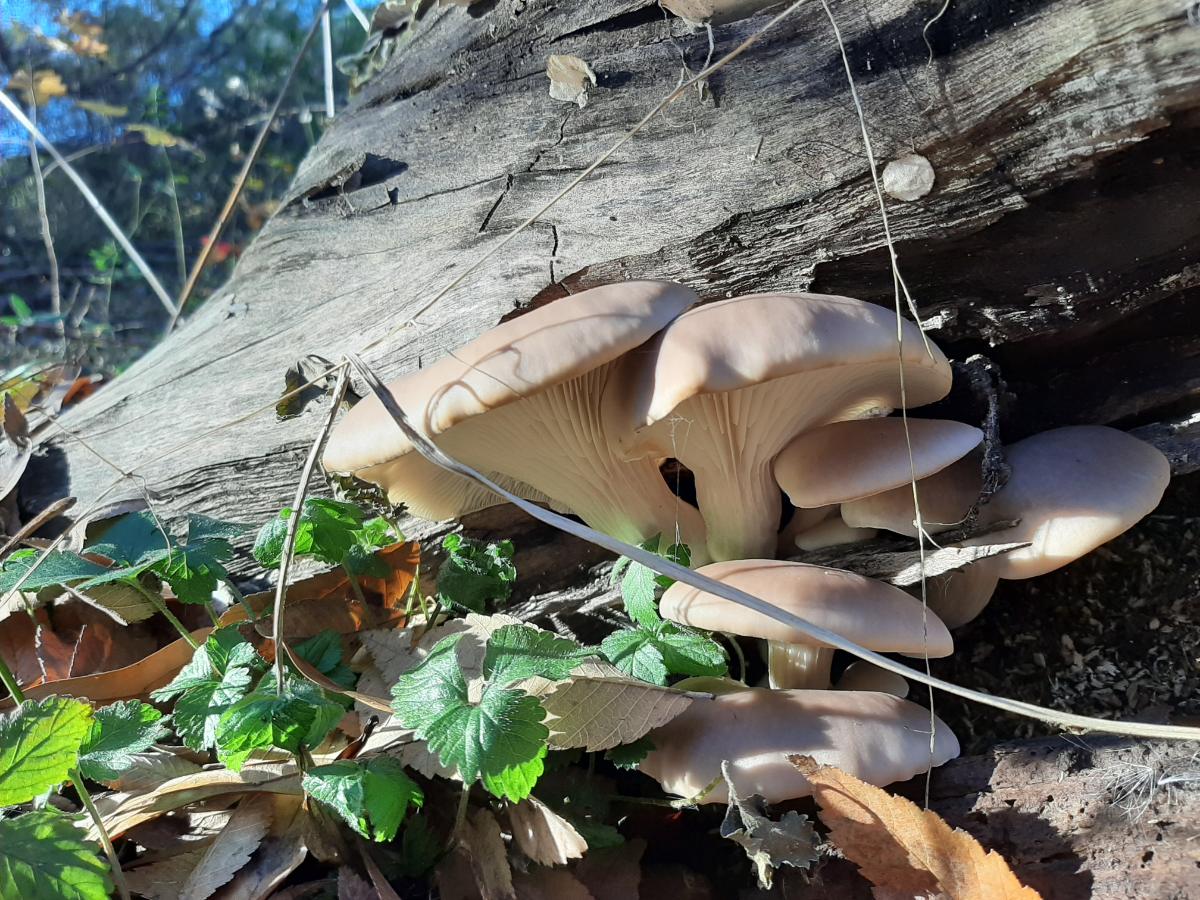
Turkey Tail Mushroom (Trametes versicolor)
This isn’t an edible mushroom in the traditional sense. Turkey tails are medicinal mushrooms. They have a distinctive fan-shaped appearance with multicolored, concentric zones on their caps. The upper surface is velvety or slightly hairy, with various shades of brown, grey, and even blue or purple. Their underside is white with tiny, visible pores, a key feature for proper identification. Turkey tails are thin, flexible, and typically measure 2-10 cm across.
These mushrooms thrive on dead hardwood logs and fallen branches in forests. They’re commonly found on oak, maple, birch, and other deciduous trees. Turkey tails are abundant during the fall mushroom season, typically fruiting from late summer through early winter.
While turkey tails are not culinary due to their tough texture, they are known for their potential health benefits. To prepare them, clean the mushrooms thoroughly and remove any woody material. They can be used to make a flavorful broth by simmering them with aromatics like garlic and onions. Turkey tail tea is another common preparation method, steeping the dried mushrooms in hot water for 20-30 minutes. Some folks grind dried turkey tails into a powder, which can be added to soups and stews or used as a seasoning.
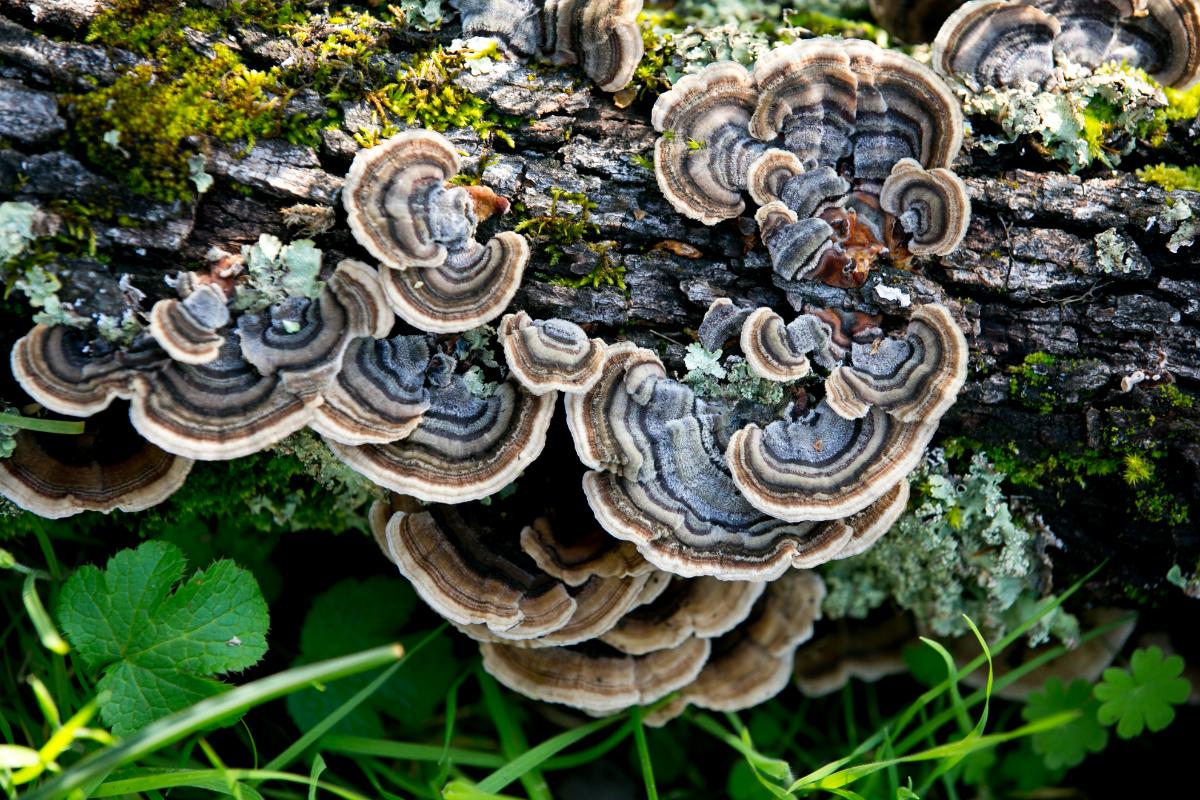
Lobsters (Hypomyces lactifluorum)
Lobster mushrooms are the result of a parasitic fungus (Hypomyces lactifluorum) infecting other mushrooms, typically from the Russula or Lactarius genera. This parasitic relationship creates the mushroom’s characteristic bright orange to reddish-orange exterior, resembling a cooked lobster shell. Lobster mushrooms have an irregular, often contorted shape and range from 4 to 12 inches in diameter. They have a firm, dense texture with a smooth surface that can be slightly scaly or ridged. The parasitic fungus usually covers the original mushroom’s gills, resulting in a smooth or slightly wrinkled underside. These mushrooms often have a faint seafood-like aroma.
Look for these mushrooms in forests, particularly under hardwood trees during late summer and fall. Lobster mushrooms are valued for their firm texture that holds up well to various cooking methods. Their nutty, slightly seafood-like flavor means they work well in many dishes, from pasta and risotto to soups and stir-fries.

Chicken of the Woods (Laetiporus gilbertsonii)
Chicken of the Woods is a vibrant and distinctive edible mushroom beloved for its unique appearance and flavor. It has the texture and consistency of chicken meat and can be easily substituted in recipes. It typically grows in large, overlapping clusters on dead and dying oak and eucalyptus trees . It is recognized by its bright orange-to-yellow color and a fan-like bracket shape.
Foraging for Chicken of the Woods takes patience and a keen eye. It is hard to predict where they will show up, but the good news is, they will return year after year. The best time to search is during late summer and fall, especially after periods of rain. Look for these mushrooms on living or dead hardwood trees, stumps, or fallen logs. They often grow high up on tree trunks, so be sure to look up.
Identifying Chicken of the Woods is relatively straightforward due to its distinctive features. The mushroom’s bright orange-to-yellow color is a key characteristic, though it often fades as it ages. Its texture is soft and spongy when young and tougher with age. The underside has pores instead of gills.
The brackets can grow quite large, sometimes reaching up to 2 feet across. While there are few lookalikes, it’s easy to identify this species once you know the key characteristics.
This edible fungus has a lemony taste and can be incorporated into a wide range of dishes. The mushroom is excellent sautéed and added to pasta dishes and risottos or used as a topping for pizzas. Its robust nature means it holds up well in soups and stews. Chicken of the woods can also be breaded and fried for a crispy, meat-like appetizer or main course.
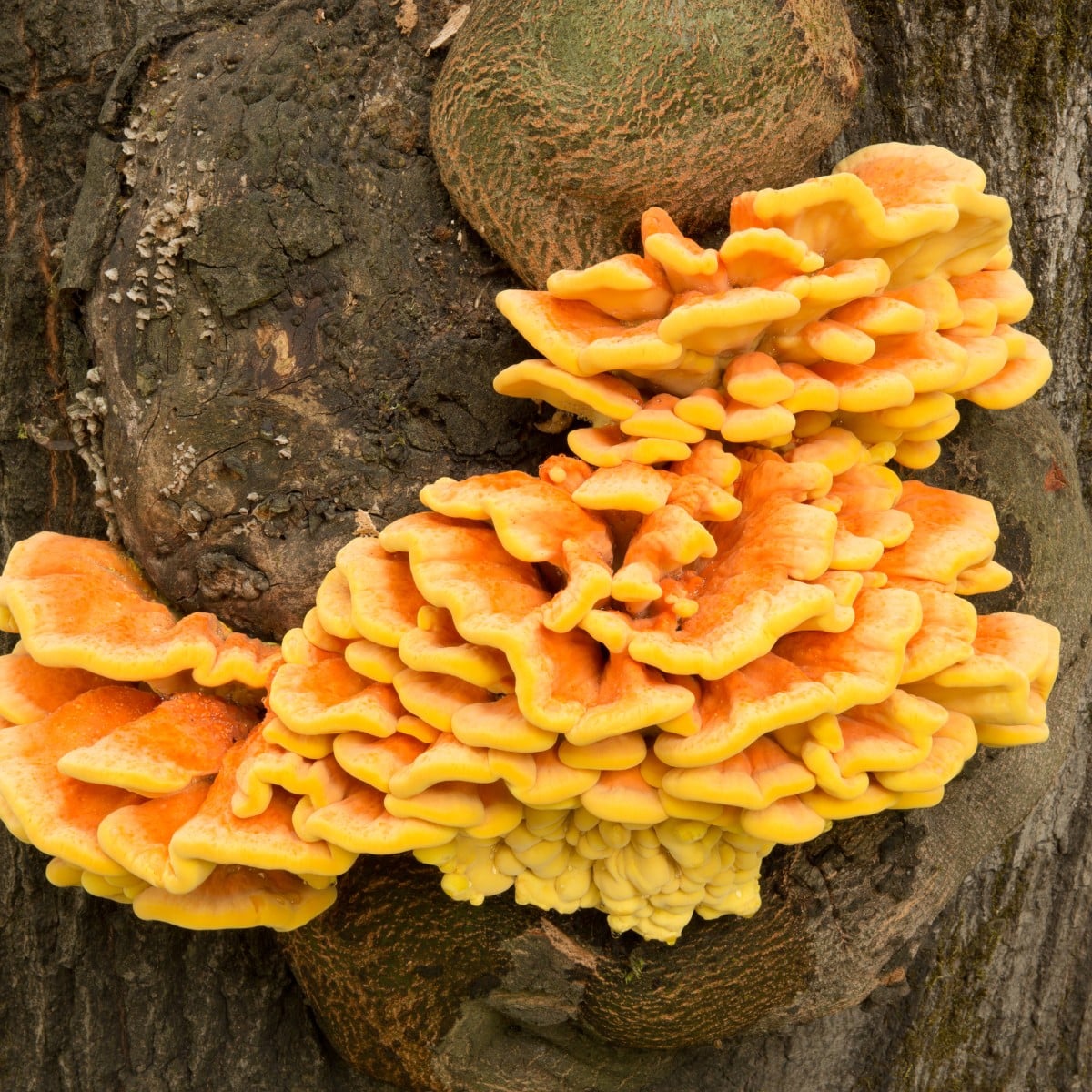
Hedgehog Mushrooms (Hydnum repandum)
Hedgehog mushrooms are identifiable by their unique “teeth” or spines underneath the cap, which replace the typical gills or pores found in other mushroom species. The caps are generally pale yellow to light orange in color, with a smooth, slightly irregular surface. Look for hedgehog mushrooms in deciduous and coniferous forests, particularly near oak, beech, or pine trees. They typically appear from late summer through fall, often growing in clusters or scattered across the forest floor.
Hedgehog mushrooms are regarded for their mild, slightly peppery flavor and firm, meaty texture. They can be prepared in various ways, including sautéing, roasting, or incorporating them into soups and stews. They also pair wonderfully with eggs in omelets or frittatas and can be used to flavor pasta dishes or risottos.
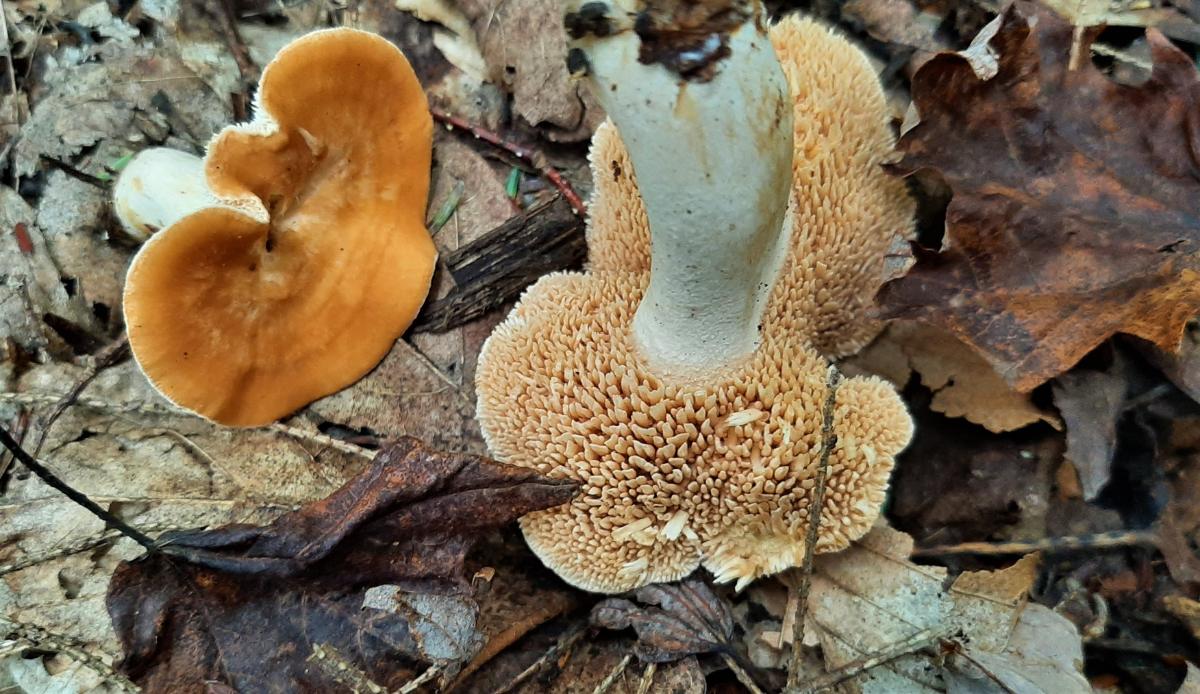
Mushroom Foraging Resources
If you’re new to mushroom foraging, here are some great guides to get started: How To Be A Successful Mushroom Forager, Mushroom Foraging 101, and Mushroom Identification Pictures and Examples.
This guide to the best identification books by region will help you find the best guides for you.
Curious about fall foraging in other areas? Check out our guides for across the US:
- Fall Mushroom Foraging in the Southeast
- Fall Mushroom Foraging in the Pacific Northwest
- Fall Mushroom Foraging in the Midwest
- Fall Mushroom Foraging in New England






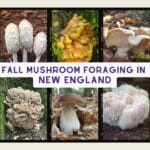

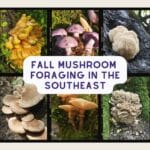
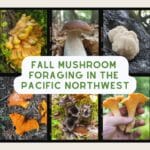
Angela
This is one of the best sites I have found for the SW. I live in AZ so and have taken a few courses from the Desert Alchemist which has helped me be more confident in determining edible and non edible when I have a human guide to ask questions on the spot.
Are your guides printed? I would be very interested in purchasing them as most place we end up there is no cell service to do research so my books I carry help. I’m going to the White Mountains this week but the season is pretty much over. I was lucky to find Cauliflower and the shellfish russula but didn’t know them at the time so left them behind. At least I know a site for next year. My goal is the Lions Mane. My yard has tons of shaggy mane that for years I pulled up thinking they were non edible and now find out they are edible. So a few have started to return but I have not tried them.
Jenny
Thank you! Desert Alchemist is awesome; I met him briefly many years ago at the Tucson Farmers Mkt. Sadly, no printed guides. That’s a good idea, though! Very cool that your yard is a shaggy mane hotspot — they should keep coming up, maybe let a few spore out each year to spread and they’ll come back more. And finding a cauliflower is pretty awesome; those are a rare forage! Happy hunting!